The NBA isn’t hiding the fact that they’re struggling with their viewership ratings. That’s because many of their problems are already visible to the average fan. One of the primary concerns is the gap between the stars of the 2010s, specifically LeBron James, Steph Curry, and Kevin Durant, and the new wave of youngsters like Anthony Edwards, Shai Gilgeous-Alexander, and Victor Wembanyama. Those guys are already stars in the NBA but are largely perceived to be members of the “next up” crew of players particularly because none of them have sniffed the Finals.
The best players don’t scream “face of the league” which is evident given how hard the NBA is trying to hand the crown to Edwards. Nikola Jokic, Giannis Antetokounmpo, Joel Embiid, and Luka Doncic don’t have the same aura that guys like LeBron or Edwards do. What’s the common thread? None of them are American.
I tend to think that the recent foreigner takeover is the league’s most potent problem when it comes to viewership with the overwhelming surplus of three-pointers coming in a close second. NBA League Pass and StreamEast are a piece of the puzzle and the media’s pessimistic public statements about the league plus the lack of large market teams at the top of the standings (particularly in the west) play into the issue as well.
My guy Ben Paradis at Beyond the Box Score highlighted all of the factors in an article last week. You can check it out here.
All of these issues are out in the open and make the NBA seem like the victim of poor viewership. In reality, the NBA is its own worst enemy.
The First Apron
2011 was the first time a tax apron was introduced. The tax apron provided a limit to how far teams could spend above the salary cap and luxury tax line without having to pay added penalties that brought other restrictions as well according to Yahoo Sports. To offer teams flexibility, the CBA introduced a mid-level exception which allowed teams to sign free agents to a contract using a designated maximum amount even if it puts the team over the salary cap.
In 2023, the NBA Collective Bargaining Agreement (CBA) outlined its strictest apron system yet, referred to as the first apron. The apron is a total team salary figure that if exceeded, restricts teams from making certain trades.
These are the six teams whose team salaries fall beyond the first apron.
More specifically, teams with a salary above the first apron (roughly $178.7 million this season), are not allowed to make trades in which the combined salary of incoming players exceeds that of their outgoing players. Let’s look at an example.
Last offseason, there were whispers of a potential blockbuster deal that would send Kevin Durant to the Rockets. ClutchPoints outlined a mock trade that I thought was fair for both sides.
Rockets receive:
Kevin Durant ($51.18M)
Grayson Allen ($15.63M)
Total Salary: $66.81M
Suns receive:
Dillon Brooks ($22.26M)
Steven Adams ($12.60M)
Jabari Smith Jr. ($9.77M)
Jae’Sean Tate ($7.57M)
Tari Eason ($3.79M)
Cam Whitmore ($3.38M)
4 first-round picks, 2 second-round picks
Total Salary: $59.37M
The Rockets are one of 15 teams that are not affected by an apron. Therefore, they are allowed to receive more salary than they are trading away. In this particular case, they are receiving 113% more salary than they are giving up. For teams like the Rockets that are not affected by aprons, they can receive anywhere up to 125% of the assets they gave away.
Let’s pretend that the Rockets were beyond the first apron like the six other teams above. That would disallow them from making this trade for Kevin Durant and any other trade where the return is over 100%. Take away Grayson Allen and the Rockets would receive $51.18M and give away $59.37M which is perfectly fine because it keeps the return rate under 100%. But with Allen included, this hypothetical version of the Rockets would not be able to complete this trade.
The Second Apron
If you thought the first first apron sounded harsh, wait until you hear about the second apron. The second apron includes the first apron restriction where teams aren’t allowed to receive over 100% of the salary it gives up. In addition to those first-apron restrictions, second-apron teams can't use the mid-level exception, can't trade multiple players in the same deal, can't sign-and-trade their own players to acquire others, and can't send out cash in any trades. Finally, teams above the second apron at the end of the regular season will have their first-round draft pick seven years out frozen so that it can't be used in any trades. The only way to unfreeze it would be to duck the second apron in at least three of the next four years (The Score).
In simpler terms, there are essentially only two types of trades that can be made if you find yourself beyond the second apron.
1-for-1 trades which very rarely elevate a team’s performance by more than a small margin because draft picks can’t be traded.
Trading a superstar for a bunch of young or low-salary players which implies that a team thinks it can no longer compete for a championship.
Thus, if a team is beyond the second apron but not a realistic contender, they are virtually screwed.
The second apron is approximately $188.9M which means nine teams are beyond it.
The CBA’s goal when they instituted the second apron was to increase parity across the league. They wanted to prevent dynasties like the 2010s Warriors, early 2000s Lakers, and the 90s Bulls to make basketball more unpredictable.
Here’s the bottom line. The NBA can blame outside factors for their poor viewership numbers, but they have only themselves to blame for those numbers because the congruity between teams created by the new tax aprons is destroying the league and you’re about to read why.
The Problem
Look at the nine teams beyond the second apron again. Let’s run through the states of each team.
Miami Heat (13-13): They’ve missed their championship window and are publicly exploring trading Jimmy Butler—their best player in the last decade.
Denver Nuggets (14-11): They are wasting away the prime of one of the greatest players of all time and are getting older and less skilled every year.
Golden State Warriors (15-12): They are a one-man show with Steph Curry at the helm and don’t have enough time to supplement their franchise cornerstone’s greatness before he begins to regress.
Los Angeles Lakers (16-12): They’re a reality TV show and cannot be taken seriously as long as 40-year-old LeBron James is worked as hard as he is and their defense is as bad as it is.
Washington Wizards (4-22): They’re the worst team in the NBA and the draft lottery is their only hope.
Boston Celtics (22-6): They are the best team in the NBA that has one more year with their current roster.
Milwaukee Bucks (15-12): They’re red-hot off an NBA Cup victory, but still a poor defensive team with weak depth outside of Giannis Antetokounmpo and Damian Lillard.
Phoenix Suns (14-13): They are a 5th seed at best and are not even a Play-In team without Kevin Durant which tends to be the case a lot these days.
Minnesota Timberwolves (14-13): They reached the conference finals last year but made a panic trade that has set them back heavily.
Let’s forget about the Wizards for all intents and purposes. Seven of the other eight teams have fallen out of the inner circle of the contenders and are now a dash better than mediocre at best and it’s because of the second apron.
The Bucks, Suns, Nuggets, Warriors, and Lakers are watching their superstars grow old without any way to offer them help. Everybody always gives the Lakers, Warriors, and Suns front offices a hard time for not providing LeBron, Curry, and Durant with enough help to compete for championships in the twilight of their careers, but it’s the league they should be blaming. The only way those teams can change their current position would be to trade their superstars and start a rebuild.
I’m more concerned about the Nuggets and Bucks who have two of the greatest players we’ve ever seen in Giannis and Jokic but have no way to win championships with them. It sounds insane but both teams would have a better chance of winning the championship in five years if they traded their best players than if they kept them. That’s messed up.
There have been some trade whispers in Denver recently but it’s not a news-breaking trade that would send out all of the Nuggets’ draft picks for a second superstar to pair with Jokic. No, it’s Michael Porter Jr. for Zach Lavine. That’s about as good as the Nuggets can do with the second apron in place.
As for the Heat, they were an overachieving team that convinced themselves they were good enough to repeatedly compete for championships which they aren’t.
Then there’s the Timberwolves, who are the perfect case of a victim of the second apron and also a perfect case of why the CBA should change its rules. Minnesota had a great young core anchored by Anthony Edwards and Karl-Anthony Towns that were coming off of an electric postseason in which they miraculously toppled the defending champs. But in the offseason, they panicked. They realized that with the second apron in place, they would be very restricted in adding pieces to their team to get over the hump. They traded Towns for Julius Randle and Donte DiVincenzo—a terrible trade for the Wolves in retrospect.
Now, Edwards, the young face of American basketball and the guy that the NBA has been desperate to crown as the next face of the league might be entering the same realm as Giannis and Jokic. Minnesota has the highest cap hit in the league and has no way to improve while they lurk around .500 in the middle of the Western Conference.
Even the Celtics, who are the one team out of those nine who are in the top five in championship odds, have a more bleak forecast than the sunny skies might show. After this year, they likely won’t be able to resign Al Horford and several other free agents and will be in the same position as these other teams.
These teams have no way to get better and that’s a huge problem for the NBA because look at the players on those nine teams over the second apron. Nikola Jokic, Steph Curry, LeBron James, Anthony Davis, Giannis Antetokounmpo, Damian Lillard, Kevin Durant, Devin Booker, Anthony Edwards, Jayson Tatum, Jaylen Brown, Jimmy Butler, and Jordan Po—I’m kidding—all play for teams over the second apron. Nine of the top 13 players in the NBA according to The Ringer are on one of those nine teams. Does the NBA want all of its best talent to play on middling teams?
None of these all-time great players can compete for championships anymore. Even if they could, the championship window these days only lasts a year or two as we saw with the Nuggets when they won in 2023. Nikola Jokic is 29, Giannis Antetokounmpo is 30, Kevin Durant and Steph Curry are 36, and LeBron James is 39. Sadly, it’s unlikely that these all-time greats will ever be the best players on a championship team ever again.
The NBA must also recognize that the best players gravitate toward the biggest markets. KD and LeBron weren’t drafted by the Suns and the Lakers. Part of the reason why Steph has stayed in the Bay for all these years is because it’s a great market. If there’s anything we’ve learned since the implementation of the second apron, it’s that these large market teams can’t contend because they are where the stars go. It’s hard for superstars to win with the second apron in place.
So, what does that leave? It leaves Cleveland, Oklahoma City, Memphis, and Houston as four of the five best teams in the league this season. Cleveland, OKC, and Memphis are all near the bottom of market size and Houston is average. And it doesn’t matter if these teams have box office players like Donovan Mitchell, SGA, and Ja Morant. There just aren’t enough fans of these teams and as a result, not enough viewers by the NBA’s standard.
The league’s top talents standing no chance at winning the championship is obviously a huge problem but it’s not the only one created by the tax aprons. Because second apron teams can’t make trades, there are no new looks across the league by means of trades. In the 2010s, blockbuster deals Like Carmelo Anthony to the Knicks, Chris Paul to the Clippers, James Harden to the Rockets, Kyrie Irving to the Celtics, and Paul George to the Clippers sent massive ripples around the league. I didn’t follow the NBA early enough to witness those first three trades but I recall how much national attention the Clippers received when Paul George was traded from Oklahoma City and the hope that Celtics fans gained when they traded for Irving.
Even in the early 2020s, Anthony Davis and Russell Westbrook were traded to the Lakers, James Harden was traded to the Nets, 76ers, and Clippers, and Kevin Durant was traded to the Suns. I remember watching NFL Live pause their usual football conversation to bring in Adrian Wojnarowski to discuss the Harden trade to Brooklyn. When it comes to trades correlating to viewership, all change is good change.
Yes, there were plenty of trades this offseason but not to the level of years past. Paul George has done virtually nothing for the 76ers, DeMar DeRozan hasn’t headlined a single story on the Kings, Klay Thompson is averaging 14.3 PPG on the Mavs, and Mikal Bridges has been underwhelming as the third option on the Knicks. The Towns trade has been important to giving the Eastern Conference a slightly different look but its significance has been blown slightly out of proportion because he plays in New York.
As for the eight teams in the second apron (remember, we got rid of the Wizards), here were the biggest trades.
Timberwolves acquired Julius Randle and Donte DiVincenzo from the Knicks.
Warriors acquired Lindy Waters III from the Thunder.
Suns acquired E.J. Liddell from the Hawks.
That’s the list. Three years ago, the Nuggets might have made a trade for DeJounte Murray, Klay Thompson or another established guard. The Heat would have worked out a way to trade Jimmy Butler already. The Suns would have added real depth to put themselves in contention. Maybe the Warriors would have sniped Lauri Markkanen from the Jazz. Perhaps the Lakers would have traded for Trae Young. With the aprons in place, all of these ideal trades have been taken off the table.
The issue for the league is that fans are tired of watching the same product year after year. We want to see Jokic and Giannis with new teammates, LeBron and Curry with a legitimate chance, and for Anthony Edwards’ future to be bright. But the league has taken that away from us.
It’s time for Adam Silver and the CBA to take a long look in the mirror. What they’ll find is not a victim but rather a catalyst for a viewership issue that will not be fixed by the cyclical nature of the NBA like everyone says it will. This is a problem that the league has sprung upon itself, and the only way out is to admit they were wrong and abolish the apron system.

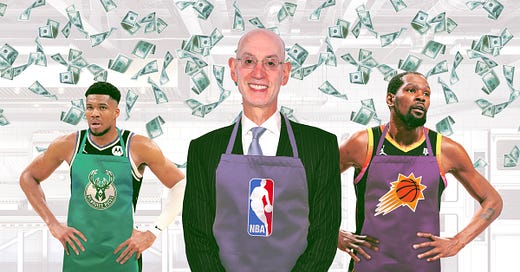


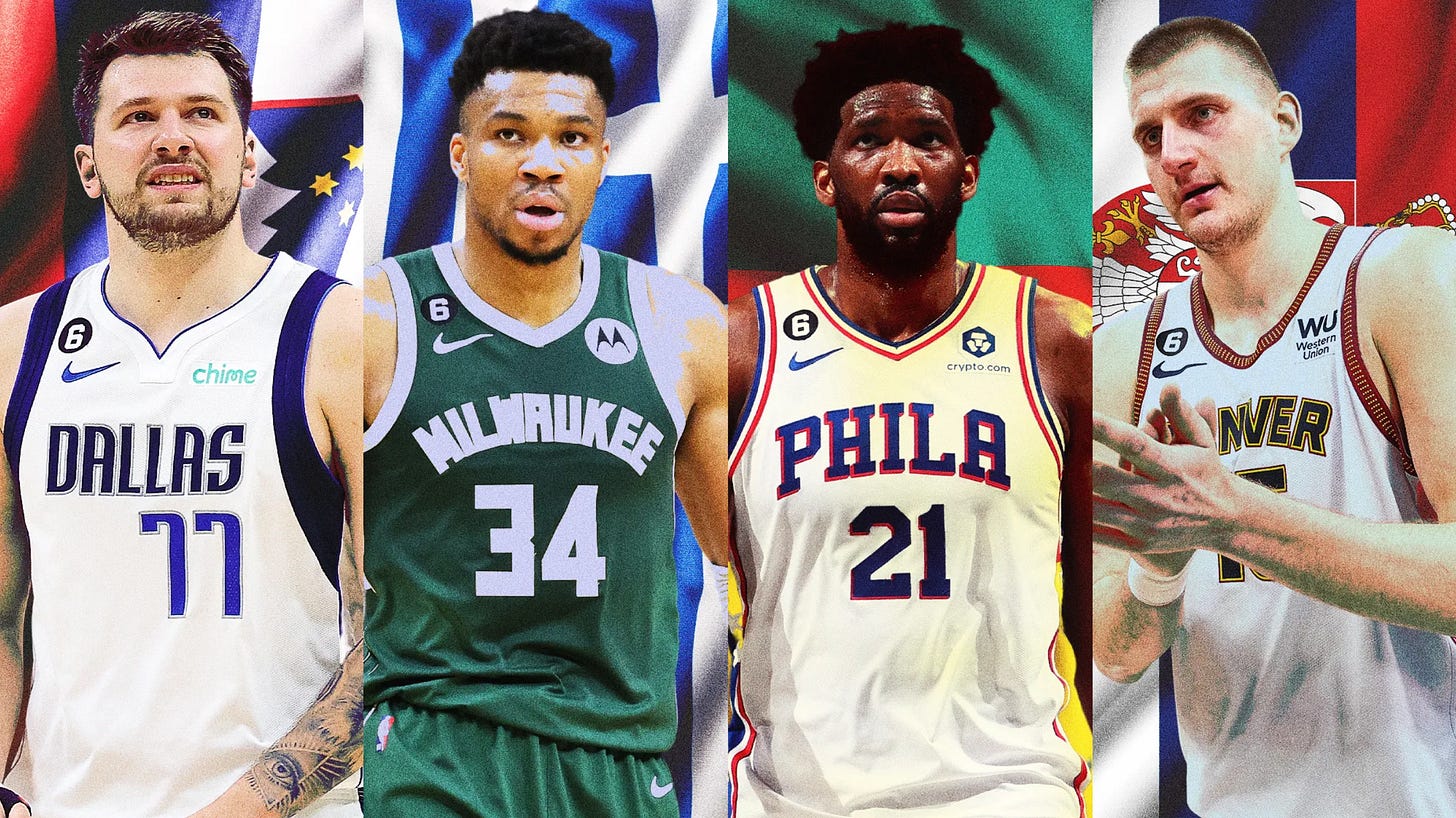

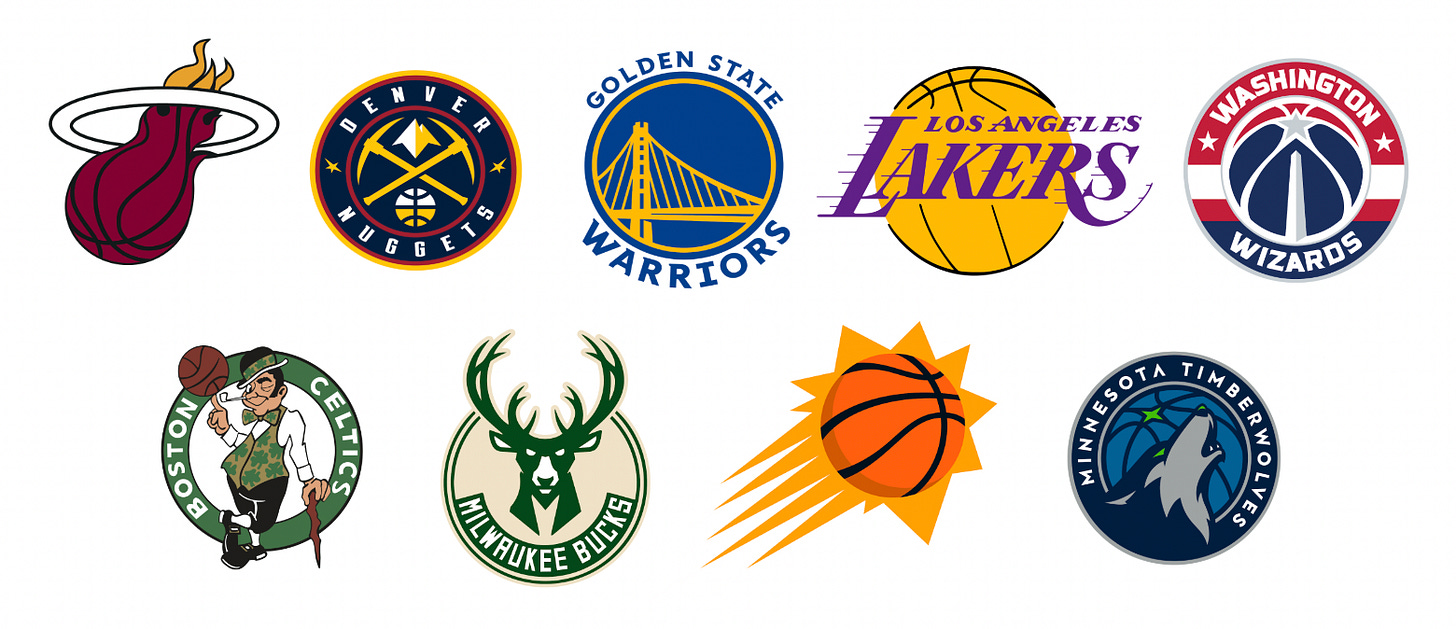
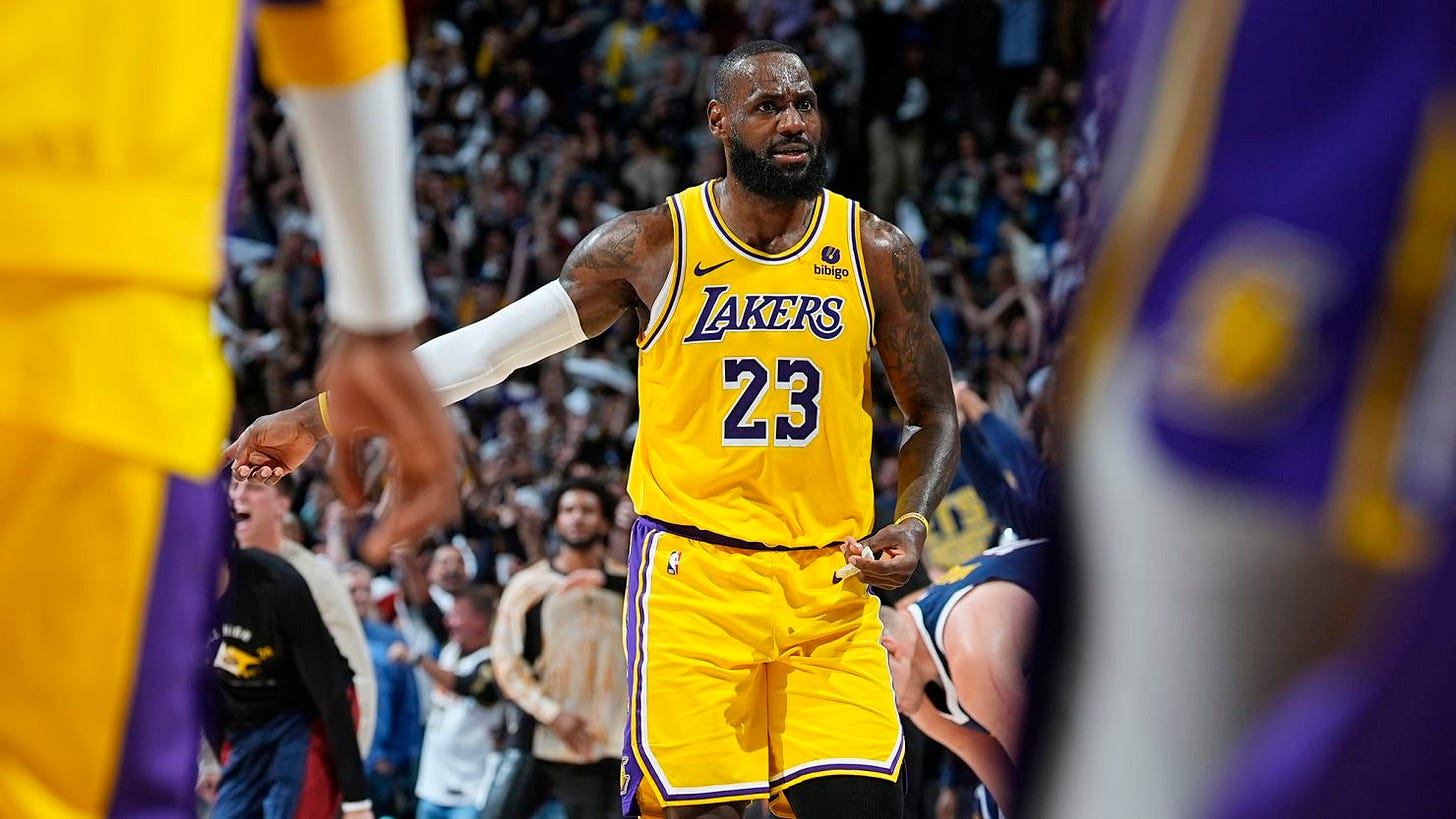

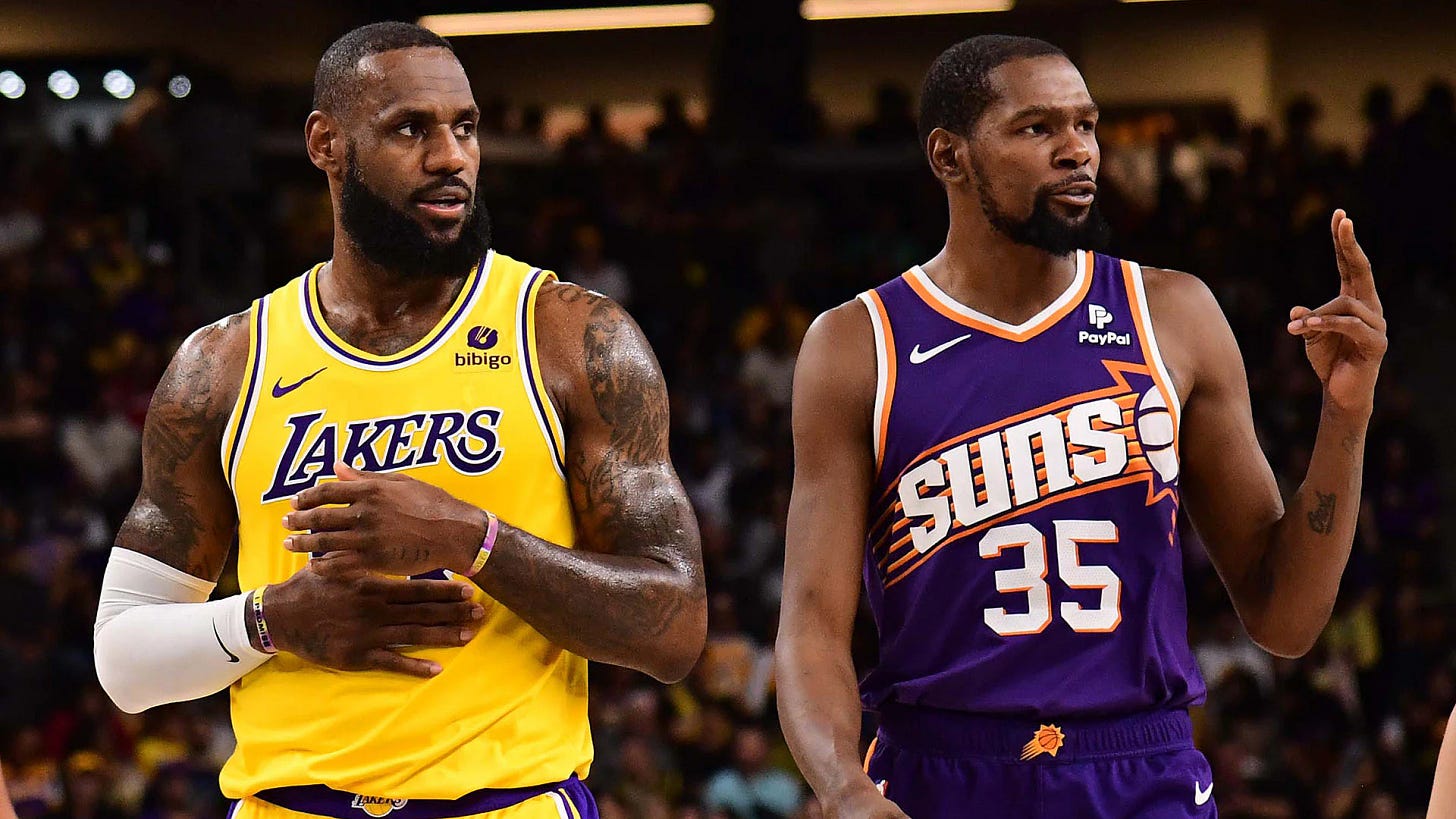

If the suns traded durant to the rockets for dillon brooks and steven adams I would kill myself
Awesome article. Didn’t know any of this before - the Lakers might be doomed for like 10 years.